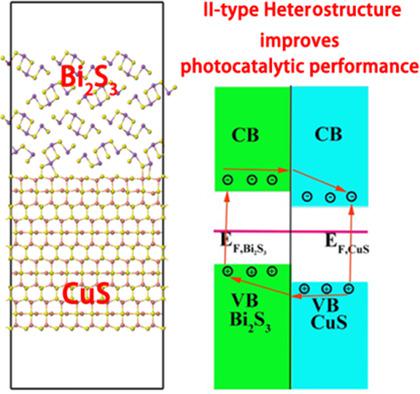当前位置:
X-MOL 学术
›
Phys. Status Solidi B
›
论文详情
Our official English website, www.x-mol.net, welcomes your
feedback! (Note: you will need to create a separate account there.)
Density Functional Theory Study on the Interfacial Properties of CuS/Bi2S3 Heterostructure
Physica Status Solidi (B) - Basic Solid State Physics ( IF 1.5 ) Pub Date : 2021-09-24 , DOI: 10.1002/pssb.202100268 Bao-Feng Shan 1 , Jie Deng 1 , Zong-Yan Zhao 1
Physica Status Solidi (B) - Basic Solid State Physics ( IF 1.5 ) Pub Date : 2021-09-24 , DOI: 10.1002/pssb.202100268 Bao-Feng Shan 1 , Jie Deng 1 , Zong-Yan Zhao 1
Affiliation

|
Composite heterostructure photocatalysts can effectively improve photocatalytic performance. For narrow-bandgap semiconductors, such as Bi2S3, constructing heterostructures with other semiconductors can obviously promote the separation of photogenerated electron−hole pairs and improve their photocatalytic performance. However, some basic and important parts of this technology still require further clarification. Herein, the interface properties of CuS/Bi2S3 heterostructure was studied using density functional theory calculations. The results show that the electronic structure of the interface model shows some different characteristics compared with the bulk and surface models due to the different bonding modes and chemical environments at the interface. At the interface of the CuS/Bi2S3 heterostructure, the band edge of CuS is bent downward relative to Bi2S3 to form a type II heterostructure. In addition, in the equilibrium state, the direction of the built-in electric field of the heterostructure is from Bi2S3 to CuS. Therefore, the photogenerated electron−hole pairs can be separated by the CuS/Bi2S3 interface, which is extremely advantageous for the improvement of photocatalytic performance. The formation of the CuS/Bi2S3 heterostructure not only broadens the light absorption of CuS but also suppresses the recombination of photogenerated electron−hole pairs of the narrow-bandgap semiconductor Bi2S3.
中文翻译:

CuS/Bi2S3异质结构界面性质的密度泛函理论研究
复合异质结构光催化剂可以有效提高光催化性能。对于Bi 2 S 3等窄带隙半导体,与其他半导体构建异质结构可以明显促进光生电子-空穴对的分离,提高其光催化性能。但是,该技术的一些基本和重要部分仍需要进一步澄清。在此,CuS/Bi 2 S 3的界面性质使用密度泛函理论计算来研究异质结构。结果表明,由于界面处的键合模式和化学环境不同,界面模型的电子结构与体模型和表面模型相比显示出一些不同的特征。在CuS/Bi 2 S 3异质结构的界面处,CuS的能带边缘相对于Bi 2 S 3向下弯曲,形成II型异质结构。此外,在平衡状态下,异质结构的内建电场方向为Bi 2 S 3到CuS。因此,光生电子-空穴对可以通过 CuS/Bi 2 S3界面,对光催化性能的提高极为有利。CuS/Bi 2 S 3异质结构的形成不仅拓宽了CuS的光吸收,而且抑制了窄带隙半导体Bi 2 S 3的光生电子-空穴对的复合。
更新日期:2021-09-24
中文翻译:

CuS/Bi2S3异质结构界面性质的密度泛函理论研究
复合异质结构光催化剂可以有效提高光催化性能。对于Bi 2 S 3等窄带隙半导体,与其他半导体构建异质结构可以明显促进光生电子-空穴对的分离,提高其光催化性能。但是,该技术的一些基本和重要部分仍需要进一步澄清。在此,CuS/Bi 2 S 3的界面性质使用密度泛函理论计算来研究异质结构。结果表明,由于界面处的键合模式和化学环境不同,界面模型的电子结构与体模型和表面模型相比显示出一些不同的特征。在CuS/Bi 2 S 3异质结构的界面处,CuS的能带边缘相对于Bi 2 S 3向下弯曲,形成II型异质结构。此外,在平衡状态下,异质结构的内建电场方向为Bi 2 S 3到CuS。因此,光生电子-空穴对可以通过 CuS/Bi 2 S3界面,对光催化性能的提高极为有利。CuS/Bi 2 S 3异质结构的形成不仅拓宽了CuS的光吸收,而且抑制了窄带隙半导体Bi 2 S 3的光生电子-空穴对的复合。











































 京公网安备 11010802027423号
京公网安备 11010802027423号